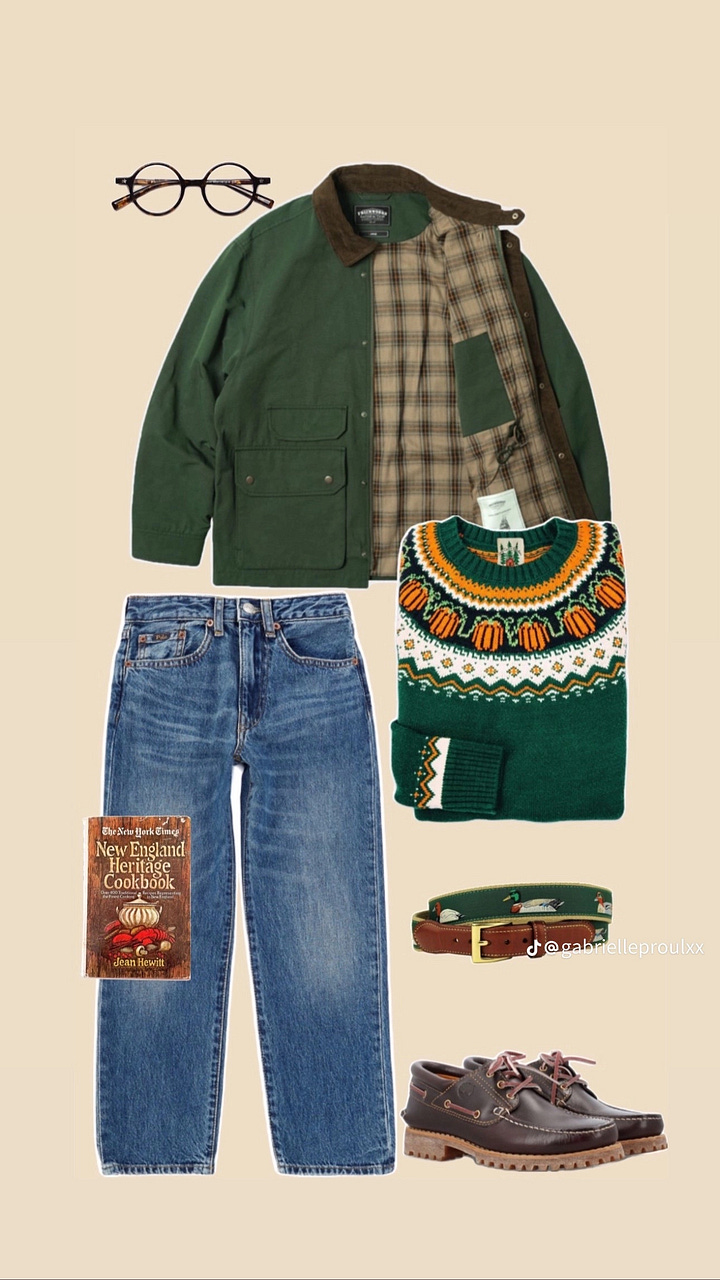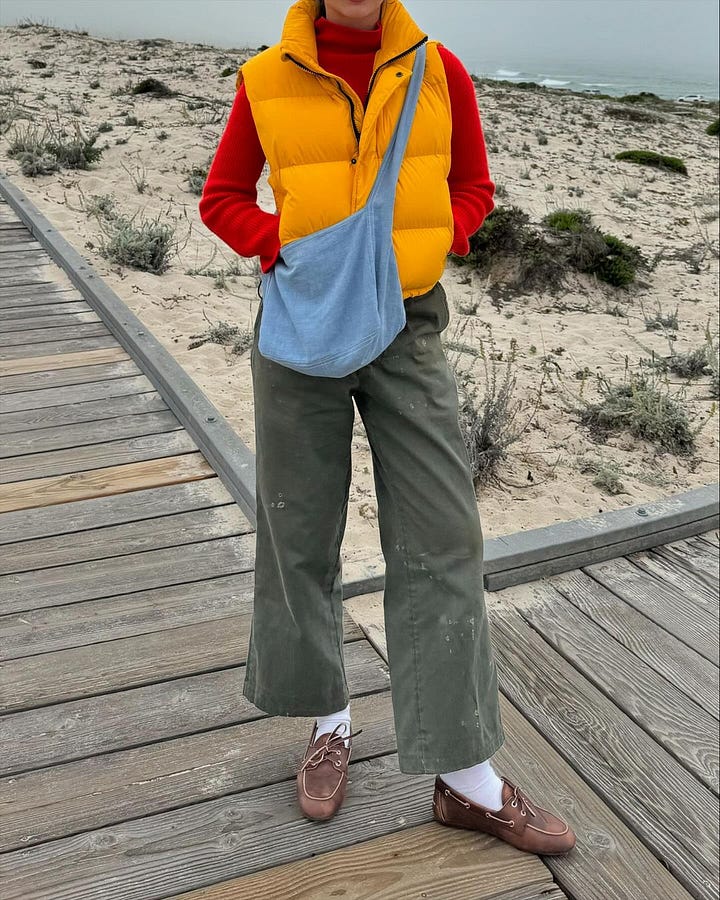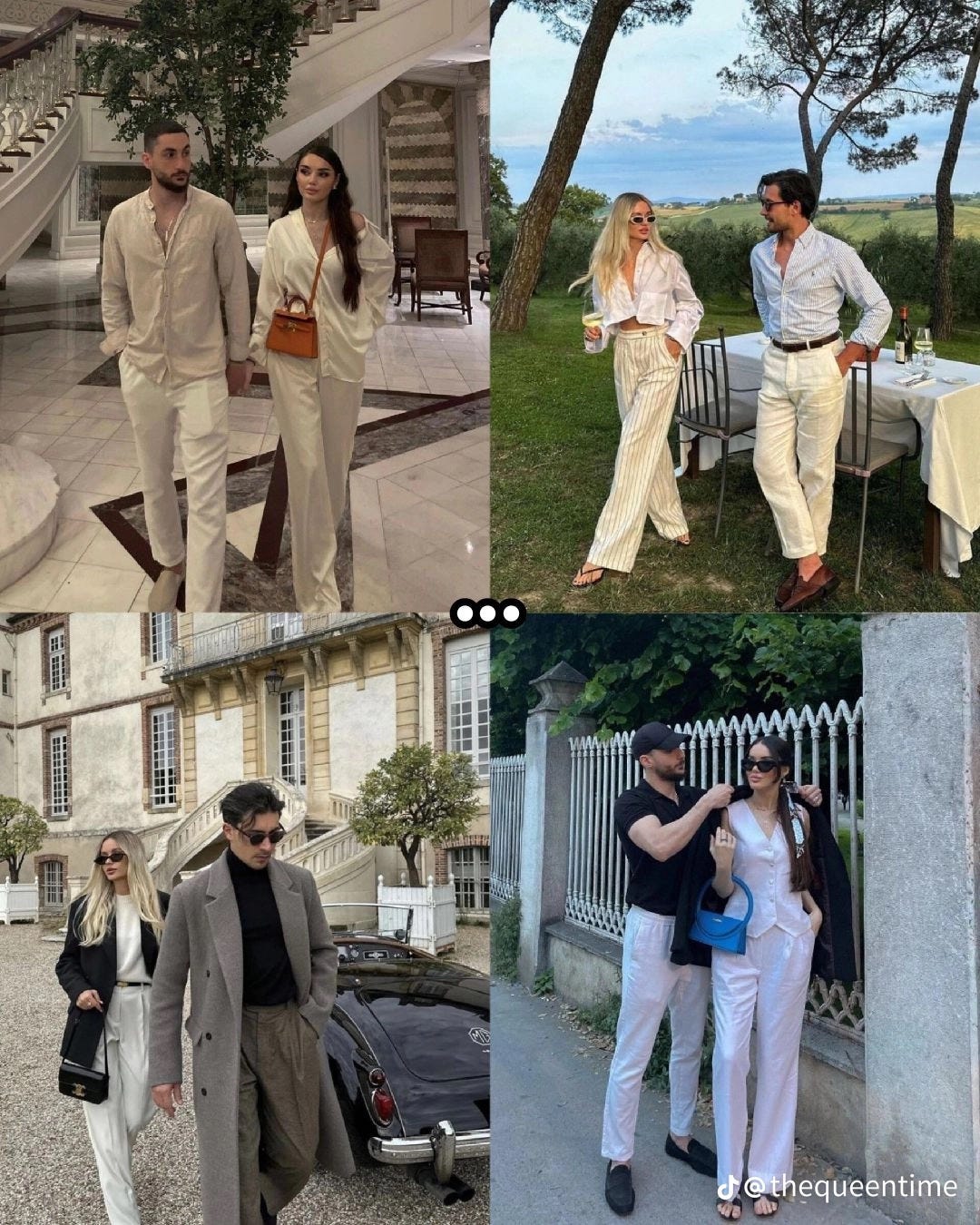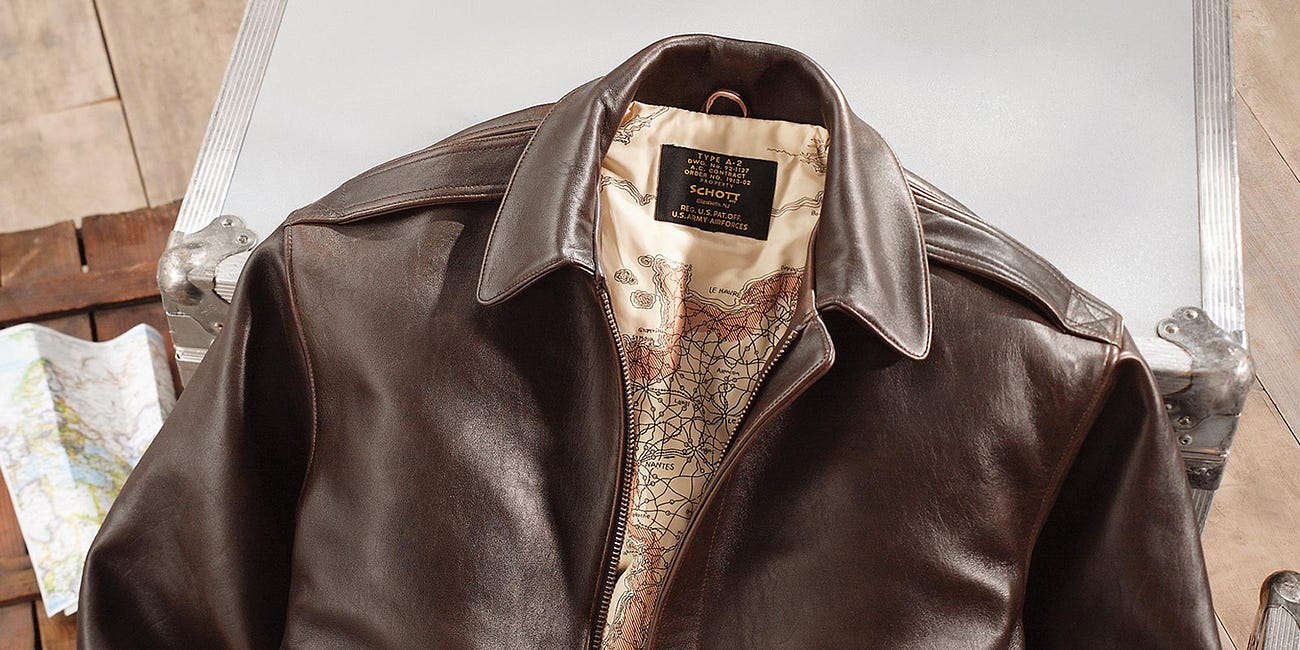TikTok keeps reinventing Ivy (or a derivative thereof)
Meeting #23: Why “old money style” is a good thing, kinda
Hello! Thank you for attending today’s meeting of The Prep Club. Last week’s Club Chair Bulletin is available here, or you can pick up a copy on the way out for a lengthy discussion of outerwear. On this week’s agenda we’re taking another sneaky swig from the forbidden bottle of trend analysis, as I lend my Zoomer brain to thoughts on some TikTok “aesthetics” pinching from the Ivy canon.
A long time ago we took a look at “Dark Academia”, as an expression of the same collegiate threads (pun intended) that tie together Prep and Ivy. There the connections were principally semantic, aesthetically they were quite different. Today, we’re taking a look at “old money” and “coastal grandpa” and their connections to the Ivy lineage.
This is an opinion piece, as always curious for others’ opinions, should they differ, below
On relevance
Before we dive further, I do think it is pertinent that we address the relative importance here. We touched on this when considering Dark Academia, there is perhaps a predisposition to brush off these “aesthetics” as unpedigreed, and unworthy of serious discussion. To put it plainly, I have certainly felt in certain circles that the fashion-obsessed consider themselves above such things as “aesthetics”.
Small Favour: If you wouldn’t mind, please share this post, or the club as a whole, with a friend who you think might be interested, it would mean a whole lot. Please also subscribe if you haven’t yet, again, it makes a big difference.
Whilst it’s true that due to a lack of pedigree, at times the outfits that result can be somewhat inauthentic, or generally just not that good, I do not believe this makes then unworthy of analysis or discussion.
In fact, I think quite the opposite.
I think it’s best to perceive these aesthetics as organic re-emergences, that develop through access to imagery, but not to the relevant literature and language to understand the history of what one is seeing. It is pertinent to remember that many of the modern Ivy “holy books” as you might call them, are wholly inaccessible, for one thing, a lot of them are in Japanese, and we’re exploring developments in the online spaces of English speaking young folks. They are often rare and expensive, whilst digitised copies exist, they tend not to be in mobile friendly formats which gel with the manner in which we consume information these days.
As I’ve referenced before, we have experienced a great information rift, in fact, I believe we’ve experienced two, one in the move from print to online publication, and another during the mass centralisation of online media consumption. Along the way, we just lost track of the threads that tie everything together, and whilst its hard for long-form writing, at times in a foreign language, to make its way onto the screens of folks today, it is very easy for photographs to do the same. As such, people rediscover these fragments of heritage fashion and, without knowing of the existing research and writing about it, begin to collect images under a newly invented name.
This is incredibly important, because it exemplifies that these styles can stand the test of time. That, devoid of the tradition of them being worn, they can still appeal to fresh eyes. Ultimately, these sorts of TikTok aesthetics open the door for folks to discover the world that you and I know, with its wealth of literature etc. We’re obsessives, obviously, but there are obsessives that will arrive here by way of something like an “Old Money” Moodboard.
On that note…
On “Old Money”
This has been very hard for me to reconcile, on the surface level, I recoil at this term. I think of the tapered ghurka pants paired to knit polos that filled our feeds about two years ago, of floppy haired white boys in their Ralph Shirts (obligatory awareness that this is a group to which I belong), and of the #menswear relics that latched on to the term in a bid to stay relevant.
The proper old money wave was a couple years ago now, and it sort of gave way to a more general prep revival in the wardrobes of folks less interested in class cosplay. That really is the biggest problem here, a language issue, one which strongly implies a sense of “dressing above one’s station”. Compounded by lists of that which is and is not “old money”.
If we escape from the world of semantics though (sort of), and look at the imagery, we’ll see a lot Ivy inspiration coming in. I would suggest this is the result of an obsession with that which collegiate fashion cannot get away from: youth. The young adulthood of those born into wealth, in the USA, is undeniably connected to the Ivy League. When you combine this with the fact that most TikTok aesthetic posting tends towards the nostalgia of photos taken on film, a lot of the imagery used could reasonably fit onto the mood boards of an Ivy wearer. There is also the consideration of prohibitive sports, which play an important part in both old money posts, and Ivy tradition: polo, tennis, golf, shooting, crew.
I think ultimately over time “old money aesthetic” has become unsalvageable as a term, too often used by dropshippers, sub-par “cashmere” sellers, and the like. Too obsessed with being a clique without any of the cause to be one, and especially in the case of menswear, entirely too obsessed with “how women want you to dress” (I’ll spare you my rant on this matter as I’m sure you find it as idiotic as I do, no need to preach to the choir).
However, I do think that a lot of the folks who type “old money aesthetic” into their search bars, are in actuality imagining trad, Ivy or prep. The doorway from old money to these styles is very much still there.
On “Coastal Grand(m/p)a”
Here we have another example which spills over into a different subspace of Ivy. It's also one I get to briefly gloat about: remember a couple months ago when I predicted Bean Boots would break containment? These grandma/grandpa aesthetics can get a little close together and confusion eclectic/coastal/weird, etc. but focussing in on the coastal, its quite plain to see the connections to heavy duty, as we’d probably call it.


As a trend this is much younger than that mentioned above, but it sees featured a number of rugged ivy staples. Bean, Sierra, Rocky Mountain; flannel shirts, down vests, and barn coats abound. The “coastal” to which they refer seems distinctly to be New England coastal, thus we get immediate ties once again to the Ivy League.
The key distinction here is that we are not looking at youth, the connection is not predominantly semantic. Rather it is the pieces being used that tie the two worlds so closely together. Take this look from Emma Chamberlain, for example:


Note the Sperries, down vest, dad cap. This is a rugged ivy look, there’s no two ways about it.
[As a note, the fact that Chamberlain is wearing this ought to be a sign that we’re pre-wave, and that the wave is probably going to be pretty sizeable, if you have a Bean barn jacket or a 60/40 vest in the sights, it might be time to get it or get out before the price doubles. My gut says the undeniable practicality of these looks for autumn-winter will compound popularity. If that prediction does come up, I think it will be pretty neat to see these heritage outdoors brands get a moment in the sun, I’ll be happy to oblige with buying guides.]
Once again the imagery here would be as at home on an Ivy board as it would a “costal grandpa” carousel. The fashion remains the same, all that changes is the language.
Considerations and conclusions
What I have hoped by presenting two Ivy-inspired TikTok tribes, one somewhat beyond saving and another as yet in its infancy, is to show that there is still a market for the traditional styles that I am regularly insufferable about in this newsletter. Interest exists within the young and as yet unknowing of the vast history of collegiate and heritage fashion, and though Substack probably isn't the best place for it (see previous statements about preaching to the choir), I should like to have a hand in bridging the gap.
I don’t think anyone will be getting strangers on TikTok to download PDFs of Free and Easy just yet. It’s more a matter of equipping people with the language to seek out that which we talk about here. Further, this doesn't mean to imply that Ivy is a heightened expression of these aesthetic sensibilities, but it is one with vast amounts of content that, without the proper language to search for, these folks may never find. The difference that knowing the name of something can make to a person's exploration and research cannot be overstated.
This is also how heritage fashion will evolve. Organic developments based on underlying appreciation, rather than forced development whilst trying not to step on the toes of that which came before. The same thing happened in Japan, when Ivy stopped referring specifically to that worn on Ivy League campuses, and instead expanded to become the trad equivalent to smart-casual.
Don’t count it out just because it’s on TikTok, every obsessive has to find their way to their passion somehow.
Thank you for your attendance today, last week’s bulletin is available here, take a look for considerations on outerwear and… actually mainly just outerwear.
If you’ve not yet joined the club, please consider subscribing to do so, publications of this fashion (pun, again, intended) will be delivered swiftly and regularly to your inbox. A new club member is always welcome.
Prep Club adjourned, see you next time.










Thank you for laying this out as I think this brings up the topic of people discovering things in general differently from how they used to before. It might be that these TikTok (or any other media) followers don’t have to progress from just a made up old-money thing to a “proper” Ivy knowledge. It might be that in 2020s the term “old-money” simply describes a certain aesthetic better because everyone gets it. That might be enough. Of course, the world of where Ivy style came from is an adventurous rabbit hole but only so for a niche group of enthusiasts. We can not and should not expect others to go on that journey just because they “frivolously” discovered old-money-like trend on media. And in fact, this frivolousness and lack of background knowledge often results in new good things because it dares to mix and match without caring too much about legacy.
Super interesting topic!